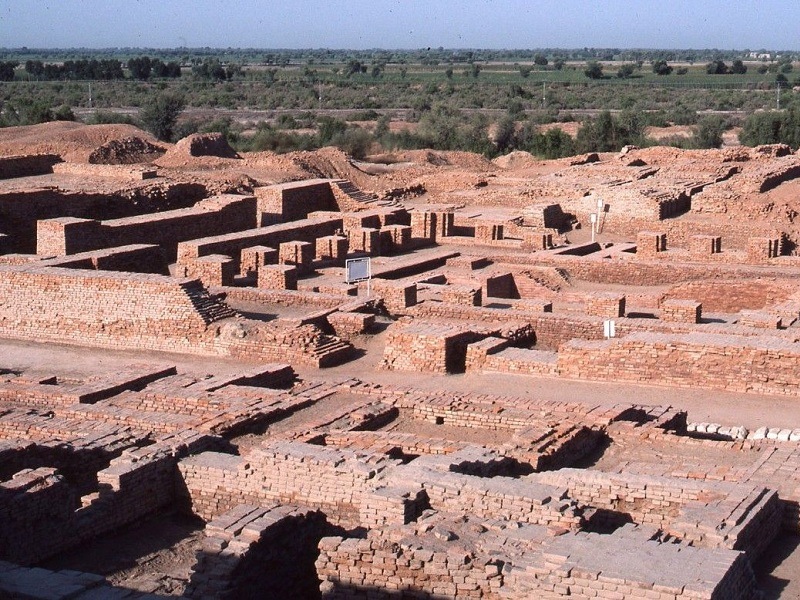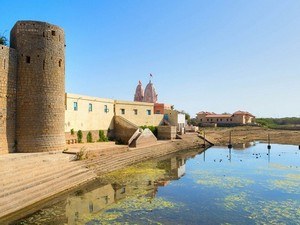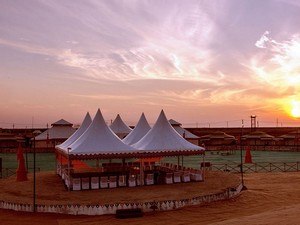Dholavira - History, Timings & Entry Fee
![]() Historical
Historical
 #12 of 13 Places to Visit in Rann Of Kutch
#12 of 13 Places to Visit in Rann Of Kutch
 Distance (From Rann Of Kutch): 296 Kms
Distance (From Rann Of Kutch): 296 Kms
 Trip Duration (Including Travel): 4 Hours/Half Day
Trip Duration (Including Travel): 4 Hours/Half Day
 Place Location: On Khadir Bet
Place Location: On Khadir Bet
 Transportation Options: Cab
Transportation Options: Cab
 Travel Tips: None
Travel Tips: None
At a distance of 92 km from Rapar, 222 km from Bhuj, and 300 km from Great Rann of Kutch, Dholavira is an archaeological site at Khadir Bet in the Kutch district of Gujarat. Managed by ASI, it is the most prominent archaeological site in India belonging to the Indus Valley Civilization and among the must-include places in Kutch packages.
Dholavira represents the ruins of an ancient city of the Harappan civilization that was inhabited over 1,200 years from 3000 BCE through 1800 BCE. It is the larger of the two most remarkable excavations of the Indus Valley Civilization or Harappan culture in India, the other being Lothal. Locally called Kotada, the 250-acre area of Dholavira sprawls across the Khadir Island of the Great Rann of Kutch and is part of the protected Kutch Desert Wildlife Sanctuary, among the top tourist places in Kutch.
The site was unearthed by the Archeological Survey of India (ASI) in 1967 but has been systematically excavated only since 1990. The excavated site of Dholavira demonstrates the ingenuity of Harappan people to evolve a highly organized system of town planning with perfected proportions, interrelation of functional areas, street-pattern, and an efficient water conservation system that supported life for more than 1200 years against harsh hot arid climate.
Lies between two seasonal streams, the Mansar in the north and Manhar in the south, Dholavira had three distinct zones-the Upper, Middle, and Lower Towns. First, the citadel, consisting of enclosures identified as a castle and a bailey having massive mud-brick walls flanked by dressed stones. To the north of the citadel was the quadrangular middle town having a distinct street pattern, large-scale enclosure, and a ceremonial ground or stadia. Measuring 283 meters in length and 47.5 meters in width, the stadia had four narrow terraces possibly as seating arrangement. Beyond the middle town and the citadel was the lower town where commoners or the working population lived. It is one of the most prominent places of heritage in Gujarat.
The expansive water management system designed to store every drop of water available shows the ingenuity of the people to survive against the rapid geo-climatic transformations. Often considered as one of the world's earliest water conservation systems, the water system of Dholavira was very well planned with 16 reservoirs and water channels that stored water or diverted water from nearby rivulets. Step wells leading to large public baths have also been discovered here. Other objects found at Dholavira include terracotta pottery, beads, gold and copper ornaments, seals, fish hooks, animal figurines, tools, urns, and some imported vessels that indicate trade links with lands as far away as Mesopotamia are kept in the museum situated nearby. Also found were 10 large stone inscriptions, carved in Indus Valley script, perhaps the world's earliest signboard.
Timings: 9 AM - 5 PM
Entry: Free















